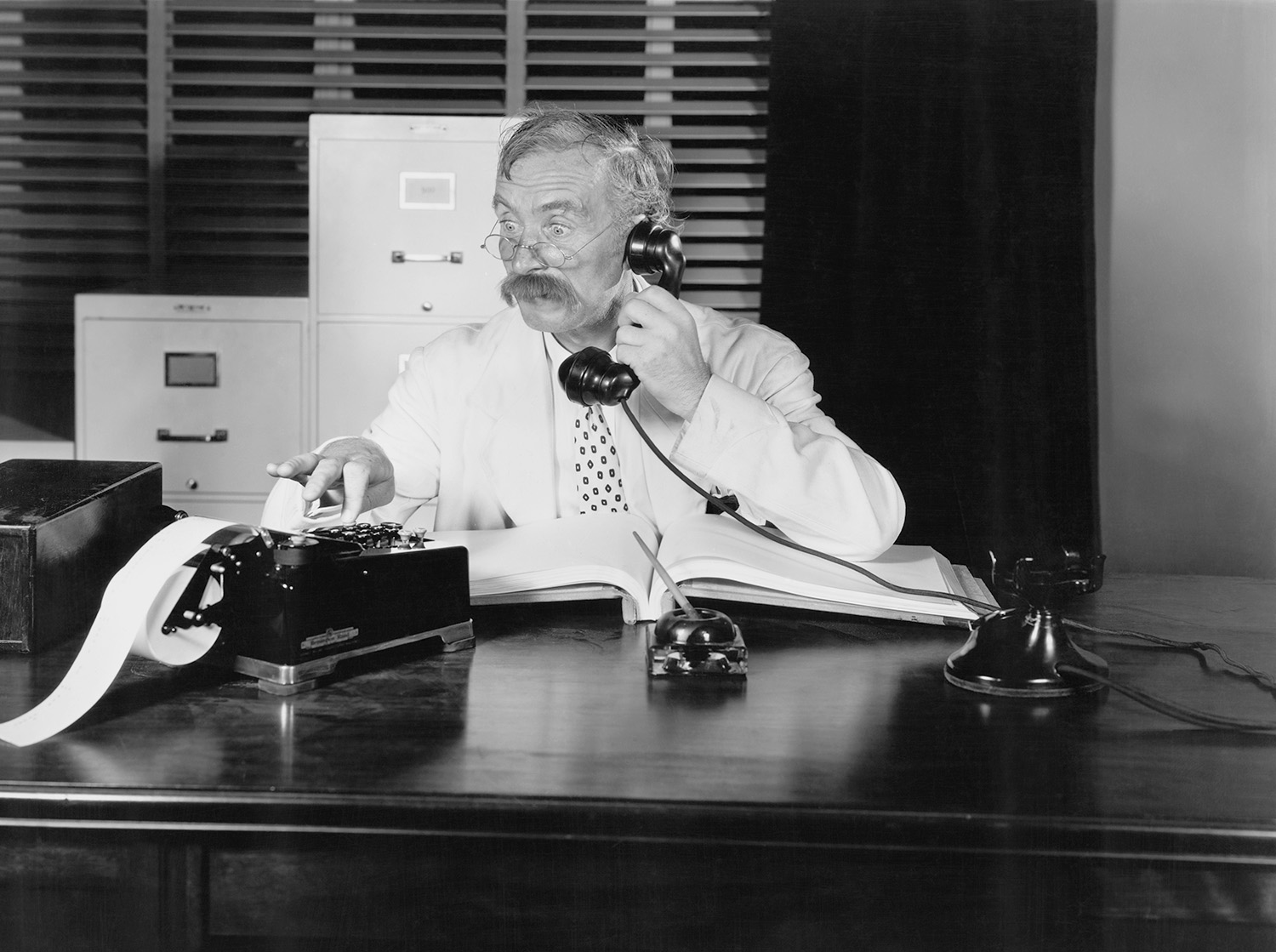There may come a time somebody places a responsibility onto your shoulders based primarily on your reputation as a pilot, but the task encompasses so much more than flying airplanes. They are showing confidence in you, no doubt about it. But how do you justify that confidence?
— James Albright

Updated:
2023-08-15
“I bought a new airplane and an old hangar, now I need you to build me a new flight department.”
“I can do that.”
Of course, the next question is: how am I going to do that? My natural reaction is to find a good business jet management company and offload all the things I know I won’t have the time or the expertise to accomplish and focus on the job of flying airplanes. The definition of pilot, after all, doesn’t include all that pencil pushing. When I got this request, the company’s CEO had already had a bad experience with a management company and insisted that I create a new flight department from scratch, and that I would handle all of it. I had never done anything like this, and I must admit, I was intimidated. If you find yourself with the same challenge, I think the process is easier these days. But avoiding my mistakes can speed things along and reinforce the confidence the boss has that you are the right person for the job. As with any large task, it helps to break things into manageable pieces. In this case, into jobs you understand.
3 — You: the human resources officer

1
You: the dispatcher
Your company is probably anxious to fly, and your first unexpected duty is that of dispatcher. Somebody has to coordinate with the departure and destination Fixed Base Operators (FBOs) to coordinate fueling, catering, and other services. Somebody needs to arrange ground transportation. Somebody must reserve hotel rooms and rental cars. Until (and if) you find someone to handle the job, that somebody is you. My initial solution was to write trip sheets using Microsoft Word and maintain a database of contacts in Excel. I used a simple flight planning program to compute times, and online resources for phone numbers. (Hint: https://www.airnav.com/ is a one-stop-shop for many of these things.) But my efforts failed because I was often rushed and made mistakes. I finally surrendered to the need for a purpose-built dispatch program when the company complained I wasn’t responsive enough to their scheduling needs. Within a year it became clear we needed a dedicated dispatcher and everyone happily gave in.
2
You: the finance officer
After we hired a full-time dispatcher my life became instantly better, and I began to focus on the big picture. We had a full-time mechanic who brought his own toolbox from home, some of which were more suited to working on a home toilet than a multi-million-dollar jet engine. The company’s finance department signed a contract with the lowest priced training vendor resulting in pilots who could pass check rides but had very little practical knowledge about the aircraft. No matter where I turned, we were not trained or equipped as well as industry best practices dictated because we were operating “on the cheap.” There is an old saying among chief pilots: “start rich, stay rich; start cheap, stay cheap.” I didn’t agree with that and set out to change our start cheap origin.
The mechanic’s toolbox, for example, had to go. He would often show up at the aircraft with a hodgepodge of tools and I sometimes found one he left behind. He didn’t know he was missing a Snap-On brand 5/8-inch open-end wrench, for example, because he still had another from Craftsman and two others from Mac Tools. The company grudgingly accepted my proposal for a complete toolbox with an automatic inventory system after I brought up a few case studies of missing tools interfering with flight controls or shelling out engines. “Say no more.” The last time they ever pushed back on a financial decision was when I fired our training vendor and doubled our training costs overnight with the industry-leading vendor. I next explained that even the best pilot is handicapped by poor training, and that their lives were in the hands of these poorly trained pilots.
The more I think about it, the more the “start cheap” adage rings true. If you start cheap, the fix will be harder to achieve. But these kinds of decisions cannot be made the way most corporate decisions are made. I know it sound crass: the price of a bad decision in aviation is often paid in blood. But if the bean counters won’t budge, it may be time to be crass.
3
You: the human resources officer
Twenty years ago, I often thought about a scene from the movie “The Right Stuff” when it comes to hiring pilots. “You mean you don’t want our best pilot?” “No, we want the best pilot we can get.” Hiring pilots and other aviators was often a matter of competing locally and paying only as much as it took to get the candidate to sign. Once hired, the person was little more than another employee. How much should you pay? It can be as simple as looking at the latest NBAA salary survey and calling around your airport to see what the competition is paying. Most chief pilots are reluctant to talk salaries, but you might get valuable intel by asking, “If I were to pay a new Challenger pilot X dollars, would that be out of line?”
The pilot and mechanic landscape has changed considerably the last few years and we face a new challenge unknown to previous generations of business jet pilots. How do you justify paying more to the two people in the front of the airplane than many (or all) of those sitting in back? The answer is that you don’t. The company HR department cannot type cast any of your aviators into existing classifications unless they are in the same business as you. The newest first officer in your flight department possesses a skillset no software engineer, top lawyer, or even a heart surgeon can hope to appreciate. It is up to you to point out that you cannot expect the level of expertise from your people unless you pay enough to hire them and then to keep them from leaving.
4
You: the standards officer
Writing an operations manual can be a daunting task and many flight departments never get around to it. They can find themselves going for years with no rules or regulations at all. Things are left to each individual’s discretion and the person in charge ends up with very little control. Having each pilot with their own Standard Operating Procedures (SOPs), or no SOPs at all, is a recipe for an accident. We wrote our first operations manual and passed our first Safety Management System (SMS) certification and got our first Letters of Authorization (LOA) with it. It was a lot of work! Ten years later, another round of SMS and LOAs didn’t go as well. Keeping our manuals up-to-date and fully compliant with international and other SMS requirements has become too much for us. There are companies dedicated to doing this well, so we turned our manuals over to https://www.aviationmanuals.com and have never looked back. Even if you don’t have any manuals at all, AviationManuals can get you started.
You can definitely write your own manuals, as we did. Besides costing less, the process will help you to understand "the why" behind "the what." I have much of what you will need already sorted out and ready for cut and paste, starting here: Standard Operating Procedures (SOPs). Warning: I say this costs less, but that is only if you measure cost in dollars. This will cost you much more time.
You will need manuals to get your FAA Letters of Operation (LOAs). It is true you can operate domestically in the United States without them, but only in a limited sense. There are many things you and your airplane can do, but unless you have LOAs, you cannot do many of these things legally. More about this: Letters of Operation.
5
You: the safety officer
As with all these positions, it would be in your best interest to delegate the duties but keep “plugged in” to what is going on. And that is especially true with your safety program. I am fond of saying that we are all safety officers in the business of flying airplanes. But if you can, have one person manage your safety program. It may be tempting to turn your safety officer loose with no formal training. That’s how you end up with walls covered with meaningless safety posters. Is “Safety First” true anywhere? If safety was first, you would never fly. Sending your safety officer to training will motivate him or her to really motivate everyone in your organization to keeping themselves (and you) out of trouble. A good place to start is with the National Business Aviation Association (https://www.nbaa.org) Safety Manager Certification Program.
6
You: the director of aviation
If you are asked to create a new flight department and feel overwhelmed by the task, that is natural. (I certainly was.) You can get to where you want to go by taking it one step at a time, one job at a time, and learning from your mistakes. You might be better off using a management company to relieve you of all this extra work and possibly save money. (Some of these claim that the discounts they will get you in training, fuel, and maintenance costs can completely offset their management fees.) But if that isn’t an option, creating a flight department that is completely self-managed is entirely doable. And I think it is one of the most satisfying things I’ve ever done.




